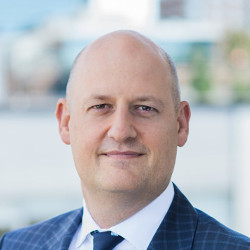Pools and Streams – Retirement Income
Jul 03, 2017
 Louise is retiring soon, and it just dawned on her that she isn’t clear what’s going to happen to her cash flow after the regular paycheques stop coming in. I find this a great source of concern among the nearly-retired – when you retire at the end of the month… how exactly will you pay for next month’s groceries?
Louise is retiring soon, and it just dawned on her that she isn’t clear what’s going to happen to her cash flow after the regular paycheques stop coming in. I find this a great source of concern among the nearly-retired – when you retire at the end of the month… how exactly will you pay for next month’s groceries?For the years that Louise has been earning an income, a little has been put aside on a regular basis into a pension, RRSP, or something similar. Her “stream of income” has a diversion into a long- term “pool of capital”.
Now at some point, she’ll collect CPP and OAS, but this is not the bulk of her retirement income. There is an employer- defined benefit pension that will pay out an income for life, but that is quite small. What will Louise do with the pool of money she’s accumulated if she wants more income?
Let’s assume that Louise has money in three separate pools – RRSP, TFSA, and Open (where the investment income is tax-deferred, tax-free, and taxable, respectively). I typically want to spend the TFSA pool last, as it is an almost perfect haven for investing. I like to take cash flow from the Open account, because so little of it is taxable (having already been taxed before being saved), but not so much that this pool will be exhausted early in retirement – it’s good to keep a sizeable amount for future expenses. Tax law requires us to take money from RRSPs after age 71, at the latest.
The streams of employment income that have been feeding and growing Louise’s retirement pool (along with the “rain” of growth and income to that pool) have stopped, and now the stream leading out of the pool begins to flow. If the stream out flows too heavily, there will be nothing left in the pool for late retirement; too softly and she perhaps underutilizes the pool and does not live the life she could have enjoyed – that’s why we perform periodic computer projections for the pool and stream, to try and tread that fine line between too much and too little.
The pool is invested in a particular way to give Louise the best chance of maximizing the utility of that pool as she wishes – some clients want it depleted with their last breath, some want a certain amount passed on to a beneficiary. But the more heavily they draw on that pool, the more conservatively we tend to be with the investing of that pool. When the annualized draws are 10% of the existing pool, we tend to have less growth investments than if the same client with the same risk tolerance were drawing out 4% annually.
Louise wants to spend her last dollar with her last breath – wanting the cheque to the funeral director to bounce, as it were… So we created a model where we had her live to age 95, and another living to age 100, just in case we had her spend her last dollar too early – I said on her 95th birthday, I didn’t want her having to freeze the cake because that was all the food she could afford from then on!
So you can see now we are concerned with how much the draws are as a proportion of the portfolio, but also how long Louise will live. And from our perspective, a great concern is that she lives a long and very active (costly) life! We have to make her money last that long.
Just imagine planning a dinner party but not knowing how many guests you’ll have – better to have too much food than too little? That’s why we project our clients will live longer than they probably will – better to leave some money unspent than have no money and still be alive!
Louise protested and asked me to make a projection only to her life expectancy – age 86 for a female Canadian resident aged 65. I let her know that “life expectancy” simply meant that 50% of the women her age would be dead within 21 years, but that 50%
would still be alive, and I didn’t want her to deal with the horrors of still being alive and healthy… with no money if she spent it all over the 21 years.
And that brings me to my last point – health. Louise thinks that as she gets older, she’ll spend less as she’s less able to travel, go out, etc. I let her know that while that might be, she might surprise herself. She might indeed be less healthy and able, in which case she’ll want to spend more on medical care and therapies to continue feeling good and maintain what health she has.
I can’t overstate the value of performing regular income projections throughout retirement to ensure our clients remain on track for the lifestyle they are expecting. If we need to make changes, it’s better that we find that out early enough so that those changes can be small and not radical later in life.
The projections we produced for Louise were in after-tax dollars, indexed to inflation, so she could see what she could actually spend, and also not worry about the rising cost of her lifestyle due to normal inflation.
We’ll be doing those things for Louise as needed, and taking into account any time she thinks of a change in life, like downsizing her home, or maybe getting something smaller but higher quality – maybe even more expensive. Projections can help her make those decisions by giving her a greater understanding of the impact on her future expected income.
You might also be interested in...
Business Owners
The most overlooked area of financial planning for business owners and incorporated professionals is the lack of integration between corporate and personal assets. When the majority of your assets are in your corporation you need very specific, specialized and personalized financial advice.
Learn More
Popular Categories
Search Insights
Book a meeting
Schedule a meeting with an RGF Advisor.







